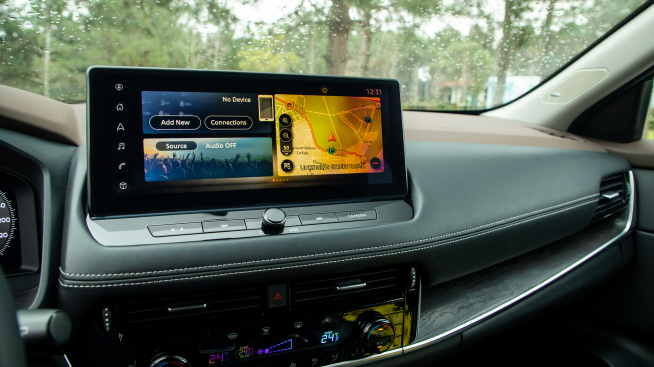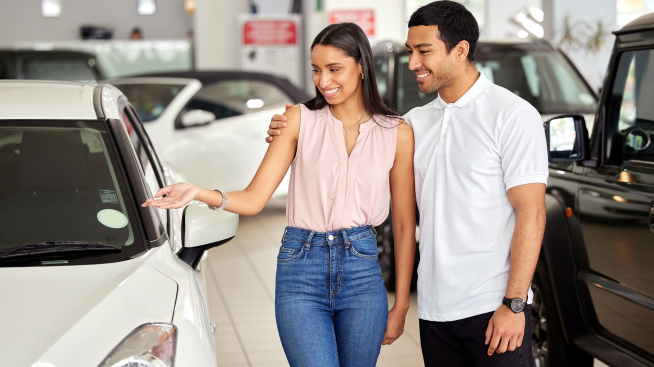Are convertibles worth it? What to know as a buyer

The sun glistens against your skin and a welcoming breeze combs through your hair as you cruise top-down in your cherry red convertible — sounds nice, right? If you’d agree, perhaps you’ve been debating “Are convertibles worth it?” The answer may be somewhat subjective, as your decision will likely be influenced by your personal preferences, lifestyle and budget. However, understanding what convertibles are and their various pros and cons could go a long way toward deciding if they’re the right move for you.
Cabriolet vs. convertible
Before deciding if a convertible is worth it for you, it may help to have a fundamental understanding of associated terminology — like the differences between cabriolets, convertibles and roadsters.
What is a convertible?
Let’s start somewhere familiar. To put it simply, “convertible” is the widely used North American term describing a car with partially or fully-retractable or removeable roof panels. These are not to be confused with moonroofs and sunroofs, which provide partial light and air. Convertibles come in two major styles, hardtop and soft top:
- Hardtop: Hardtop convertibles have roofs that are typically made of multiple hard panels, which can be manually or automatically stowed away (the latter being more common these days). While typically more expensive, hardtops tend to be more structurally durable.
- Soft top: Soft top convertibles have roofs that are usually made with waterproof cloth or vinyl and wrap around a foldable frame. In turn, they are typically lighter than hardtops, may require less space when stowed away and are typically a little less expensive than hardtops.
Whether or not a hardtop or soft top convertible is worth it for you will depend on your unique circumstances and needs. For instance, soft tops may be a more affordable option, but are more susceptible to damage and some models may require manual unfolding. On the other hand, hard tops may be more durable, but add weight and may require more trunk space when stowed.
What is a cabriolet?
A “cabriolet” is essentially just a more European term for hardtop or soft top convertibles. The term itself originated in France, where it first referred to a light horse-drawn carriage from the 18th century and featured a folding fabric hood that could be pulled up to protect occupants from the weather (much like a modern convertible).
You’re likely to see brands use the terms cabriolet vs. convertible interchangeably, as there's generally no discernible difference between the two.
What is a roadster?
Roadsters may be looked at as the luxurious and sporty cousin of convertibles and cabriolets. Typically, roadsters are defined as high-performance sport vehicles composed of two doors, two seats and a retractable top.
To make it simpler, you might broadly say that every roadster is a convertible, but not every convertible is necessarily a roadster. For instance, convertibles may be two- or four-door, while roadsters are almost always defined as strictly two-door.
Should I get a convertible?
Whether or not a convertible is worth it is a decision only you can make, but it could be easier to make that choice once you have a better understanding of the pros and cons of convertibles.
Pros of owning a convertible
When considering if you should get a convertible, consider some possible pros such as:
- Stylish appearance: If you’ve been considering a convertible, it’s likely their good looks played at least some part in that. Convertibles offer a unique look and feel, from classic to sleek and a whole lot in between.
- Driving “al fresco": Convertibles offer the unique experience of driving with the top down and really feeling the wind as you cruise down the road on a sunny day. For those who associate driving with a sense of freedom, the top-down experience may just be one of life’s best little pleasures.
- Best of both worlds: Thrilling as that top-down ride may be, convertibles have the convenience of putting a roof over your head, so you get to decide just how wind-swept you want your hair to be. This might make convertibles a great car for those living in variable climates or looking to experience the elements on an open road trip.
- Greater visibility: Without traditional roof and door frames, convertibles may offer you superior driving visibility than your typical vehicle. Fewer blind spots might not only help make driving safer but could also help you see those hidden gem parking spots you keep missing.
- More headroom: If you’re a tall driver facing a constant battle between your head and your cabin roof, the spacious freedom of a top-down convertible might be especially suited for you.
Cons of owning a convertible
Although owning a convertible is certainly an exciting option, remember to consider the cons as well:
- Higher cost: Typically, convertibles cost more than the same make and model with a standard solid top roof since convertible roofs typically require additional support and engineering.
- Additional maintenance: Convertible tops have more moving parts, which means they may be more prone to wear and tear and will likely require more maintenance than fixed roofs. This may be especially true with soft-top convertibles, as fabric or vinyl have a higher potential to sustain damage than hardtop roofs.
- Safety and exposure: Convertibles may carry extra safety concerns in the event of a rollover, due to the risk of cabin exposure and potentially lower structural integrity of the roof. The open top also leaves you more exposed to undesirable weather or potential debris from overhead.
- Cabin concerns: If you’ve ever driven on a highway with the windows down, you likely know just how noisy that can get. Now imagine there’s no roof. Even with your roof closed, convertibles (especially soft tops) often don’t offer the noise insulation that a fixed roof might. Additionally, depending on the amount of time you spend driving with the top-down, your car seats and other cabin components may experience additional wear and tear.
- Storage: Since convertible tops are often engineered to fold into your vehicle’s trunk as they stow away, you may end up sacrificing some trunk space.
Do convertibles cost more to insure?
Typically, the cost to insure a convertible will be higher than the cost for an equivalent model with a fixed roof. There are a few factors may contribute to :
- Repair costs: The cost to repair a convertible is usually higher due to unique and often expensive components, like a motorized convertible top. This may, in turn, raise your costs for collision and comprehensive coverage as insurers weigh potential repair costs.
- Higher purchase price: Typically, convertibles carry higher price tags which could lead to higher insurance rates as insurers consider the value of the asset (amongst other things) in their calculation.
- Vulnerability to theft: Convertibles may be more vulnerable to break-ins, which insurers are likely to consider in their calculations. This may be especially true with soft-top convertibles as the fabric top may be easier to damage and gain cabin access from.
- Potential weather damage: Adding to repair costs, soft-top convertibles, in particular, have the potential to increase your vehicle’s risk of weather damage due to its vulnerable composition. Roofing leaks can lead to exposure to the elements, which may damage your cabin and lead to an insurance claim. This added risk may increase your insurance costs.
In summary
So, are convertibles worth it? They might be, depending on your own preferences, finances and priorities. Evaluating the pros and cons and understanding what owning a convertible might look like financially may help you reach a more informed decision. And, if you do decide to take the plunge, the cherry-red convertible of your dreams might be on the horizon — just remember to bring a hat or a hairbrush!



